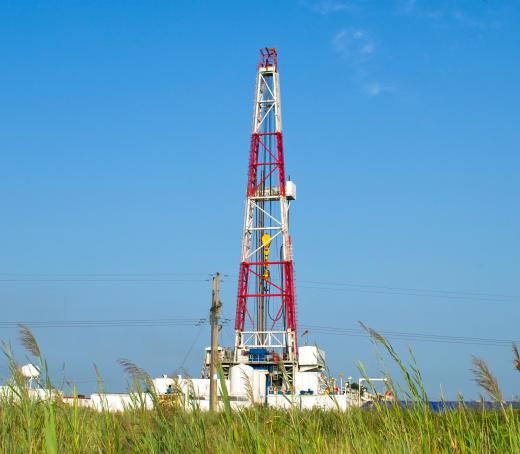What Is the Tonne of Oil Equivalent?
Tonne of oil equivalent (TOE) is a way of measuring a unit of energy for very large energy consumers such as national economies, with a base of 7.4 barrels of oil. It is a frequently-used method of gauging energy consumption versus economic productivity, and is based off of the energy value of petroleum since it is such a widely-consumed energy commodity. The actual energy value of one tonne of oil equivalent unit is 41,850,000,000 joules of energy, or 11,626 kilowatt hours when converted to an electrical power value. This is roughly equal to 1.615 metric tons of coal, which would produce 39,680,000 British thermal units (BTUs) of heat if burned. For conversion to the equivalent in natural gas consumption, which is also a foundational energy source on a global basis, a tonne of oil equivalent is equal to 1,270 cubic meters of natural gas.
As energy consumption has increased worldwide, it has become necessary to define the tonne of oil equivalent value at higher scales. Common terminology now expresses energy consumption in million tonnes of oil equivalent (Mtoe), or in giga-tonnes of oil equivalent (Gtoe) to represent billions of TOE of energy. As of 2004, the United States consumed the most energy annually at 2,331,600,000 TOE or 2.3316 Gtoe. China and Russia were in second and third place and together consumed almost as much energy as the US, and Japan was in fourth place with nearly 80% of the energy consumption of Russia at 514,600,000 TOE.

To illustrate how these overall energy values break down by source, France consumed a total of 145,050,000 TOE in 1999. Out of this total, 96,400,000 TOE came from petroleum, 33,900,000 came from natural gas, and 14,100,000 was from solid fuels like wood and coal. France also consumed a small amount of energy by comparison through other forms of electrical generation, such as nuclear power, totaling 8,000,000,000 kilowatt hours, which approximately equals only 650,000 TOE. This overall consumption for France increased by around 55% as its economy grew over the next five years to 262,900,000 TOE of energy use as of 2004.
The total energy consumption for 63 nations around the world has been charted as of 2004 to be 9,700,300,000 TOE. This factors down to countries at a level of Iceland at the bottom of the list. Though Iceland consumed a very small tonne of oil equivalent in energy by comparison of 2,600,000 TOE in 2004, its economy generated the highest level of estimated productivity and social well-being for this energy use of any nation at the time, followed secondly by the values for the United States.
The bulk of energy produced from all sources including renewable hydroelectric power to nuclear power came from natural gas, coal, and crude oil in the early 21st century. Natural gas accounted for roughly 21.7% of all global energy production, coal for 22.6%, and oil for 35.1%, for a total of 79.4%. Biomass energy production was the next largest producer at the tonne of oil equivalent level, providing 10.7% of all of the world's energy, and nuclear power provided 6.9%.
AS FEATURED ON:
AS FEATURED ON:











Discuss this Article
Post your comments